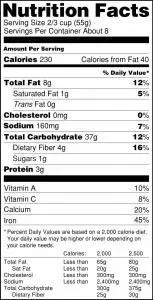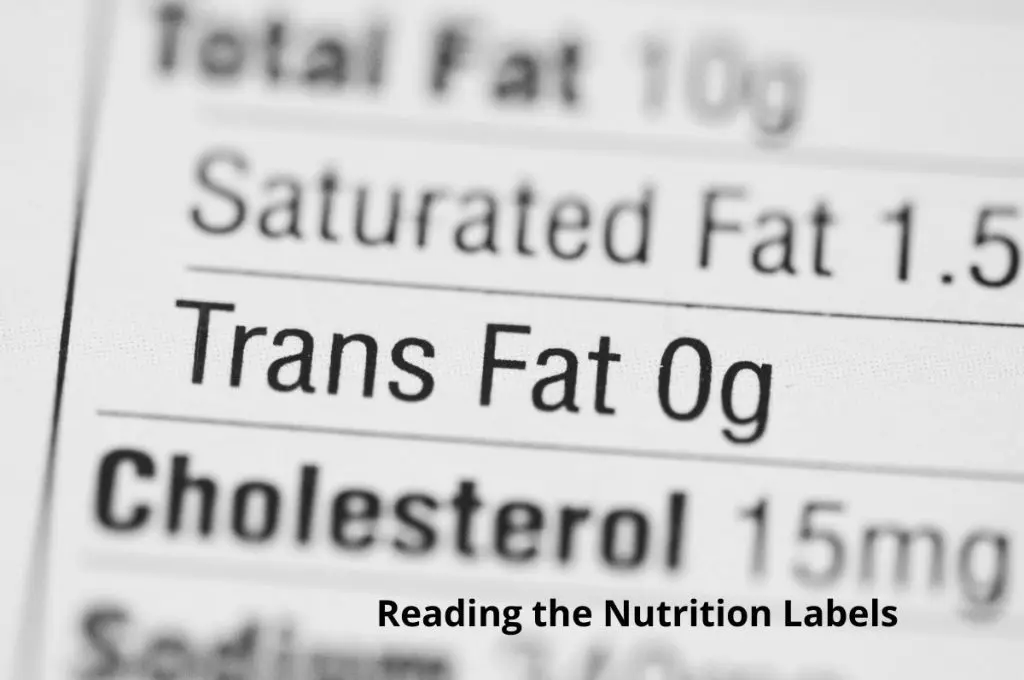 The box of crackers you are holding in the supermarket is described as “low calorie.” What does that mean? Low calorie compared to other crackers? Perhaps to cookies? You reach for a container of mixed nuts and realize a serving size contains 230 calories. Since it is a small can, you figure it could possibly contain two servings. Food labels are often designed to be misleading, enticing the appetite while evading consideration by the brain. Svelte Medical Weight Loss would like to give you a better understanding of food nutrition labels to help you better manage your weight loss in Orlando. Below are four main components of a food label and how to read them.
The box of crackers you are holding in the supermarket is described as “low calorie.” What does that mean? Low calorie compared to other crackers? Perhaps to cookies? You reach for a container of mixed nuts and realize a serving size contains 230 calories. Since it is a small can, you figure it could possibly contain two servings. Food labels are often designed to be misleading, enticing the appetite while evading consideration by the brain. Svelte Medical Weight Loss would like to give you a better understanding of food nutrition labels to help you better manage your weight loss in Orlando. Below are four main components of a food label and how to read them.
- Serving size/Servings per container/Calories: Although something may be touted as “low calorie,” the serving size corresponding with the caloric intake may be small. For instance, a small box of macaroni and cheese may contain four servings, each ½ cup. The amount of calories will increase sharply if you exceed the “low calorie” amount of half a cup. Likewise, the dry mix may have a different amount of calories and fat than when it is prepared since whole milk and butter are certainly not low in fat! Be sure to carefully examine serving size before and after all other ingredients are added, and to eat the correct serving size when determining calories, fat, protein, and other dietary components.
- Fat: The total fat content of your serving with and without the additional ingredients should contain primarily omega-3 fats (olive oil and nut butters, for instance) with a limited amount of omega-6 fats, saturated fats, and trans fats. The three latter fats include partially hydrogenated vegetable oils, shortening, margarine, butter, lard, palm and palm kernel oil, safflower oil, sunflower oil, and soybean oil.
- Total Carbohydrates: Fiber and sugar are included under this heading, although starch is understood to be a portion of the total. If a package lists total carbohydrates as 34g (grams), and the dietary fiber is 2g while the sugars are listed at 4g, this gives 28g of starch. Total carbohydrates are determined by subtracting the weight of total fat, crude protein, moisture, and ash from the food’s total weight. Total carbohydrate count, not sugars, should be calculated for the typical 300g daily total. Dietary fiber is plant based, provides roughage, does not provide energy, and does not increase blood sugar levels. When counting carbohydrates, subtract half the amount of fiber from the overall carbohydrate count if five or more grams of fiber are part of the meal. Sugars are converted to glucose for cellular energy. Sugars may occur naturally in foods, such as fruits, or they can be added to the package. The nutrition label does not specify if the sugars are natural or added. Natural sugars are found in milk, fruits, and vegetables; all other sugars are added and should constitute 10% or less of your daily caloric intake.
- Protein: This category contains meat and fish, eggs, milk, beans, legumes, and nuts. Proteins are an integral part of the body’s functioning. The amount per meal should be approximately 20-25g, or 3 ounces.
Keep in mind the total values on the package are based on a 2,000-calorie diet. If your dietary needs are above or below this amount, the percentages will not be accurate. Reading the food label will aid in your overall diet and, by reading the label accurately, you will be more attuned to what you are eating and can make more informed choices.
Svelte Medical Weight Loss is happy to answer any questions about food labels and offer suggestions for their delicious menu. Give the weight loss in Orlando team a call at 407-804-5200, and read our blogs for additional diet and nutritional information.

